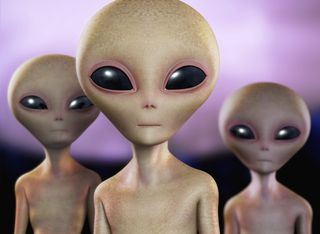Aliens and the search for life in the universe have always been a source of intrigue and curiosity for humans. Panspermia, the hypothesis that life’s building blocks can travel across space and populate new planets, has been around for centuries. Its literal translation, “seeds everywhere,” evokes a sense of cosmic life migrating from one corner of the universe to another. Recent new research suggests that the theory might hold more weight than once believed. As astronomers and scientists delve into the cosmic realm, they are uncovering intriguing evidence that hints at life traversing the galaxy through various means, even on the backs of meteorites and other space debris.

The Evolution of Panspermia
The panspermia hypothesis dates back to ancient times. Anaxagoras, a Greek philosopher from the 5th century BCE, was among the first to suggest that life could exist across the universe, describing a process where it could be spread like seeds between planets. A new fringe theory panspermia has suggested that we may not be aware of alien arrival on meteors. Fast-forward to the 18th century, and Benoît de Maillet, a French natural historian, asserted that the cosmos was filled with “seeds,” which could give life to everything within it.
The 19th century brought further scientific interest in panspermia. Svante Arrhenius, a Swedish scientist known for his work in chemistry and physics, proposed that microscopic spores could be transported through space via radiation pressure from the sun. This idea opened the door to the concept of life traveling vast distances through space, potentially leading to the formation of new life on other planets.
More recently, astronomers have shifted their focus from the origin of life to its movement across the cosmos. By developing a statistical model, two astronomers suggested that life could spread through space with the help of meteorites, acting as cosmic Uber rides for hitchhiking aliens. They identified clusters of neighboring planets with similar characteristics to Earth, supporting the idea that life could propagate throughout the galaxy. Their model demonstrates correlations between planetary characteristics and location, serving as a potential biosignature for life beyond Earth.
Modern Research and the Future of Panspermia
Contemporary research into panspermia has taken many forms, with scientists across the globe investigating the theory’s implications. In 2018, a group of 33 researchers, led by immunologist Edward Steele, proposed that life on Earth might have originated from extraterrestrial sources, brought here by comets and meteorites from a cosmic biosphere. The same year, researchers from the Harvard-Smithsonian Center published a study titled “Galactic Panspermia,” suggesting that life or its chemical components could be transferred between solar systems and galaxies through meteoroids or asteroids.
The growing interest in panspermia has led to an increasing number of studies exploring the theory of hitchhiking aliens. As more respectable intellectuals embrace the concept, expect to see more research supporting the idea of life piggybacking on space debris. With new technological advancements and a broader understanding of the cosmos, the panspermia hypothesis might become a critical aspect of understanding life’s origins and its potential spread across the universe.
For further information, visit: https://www.msn.com/en-us/travel/news
Read our previous articles: https://scitechupdate.com/index.php/social-media-negative-effects-teenagers-brain/
https://scitechupdate.com/index.php/israel-advances-cancer-treatment-with-genomic-profiling/https://scitechupdate.com/index.php/stomach-cancer-causes-signs-and-treatment/

